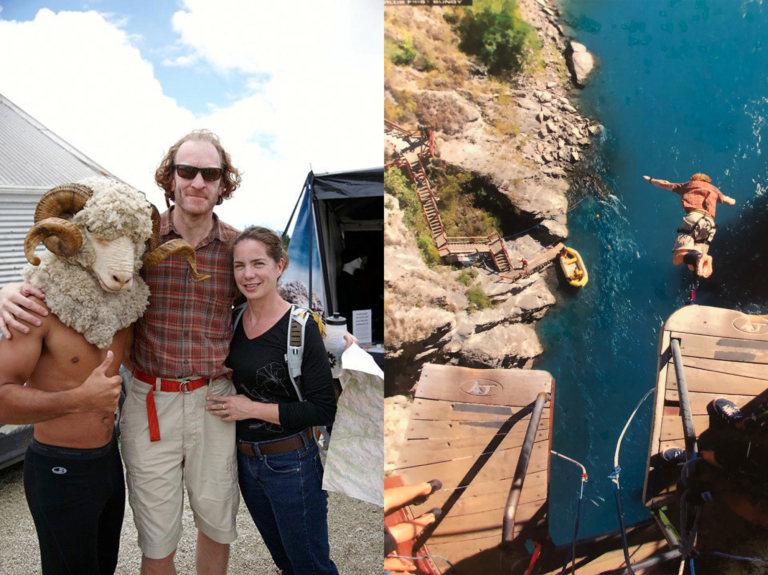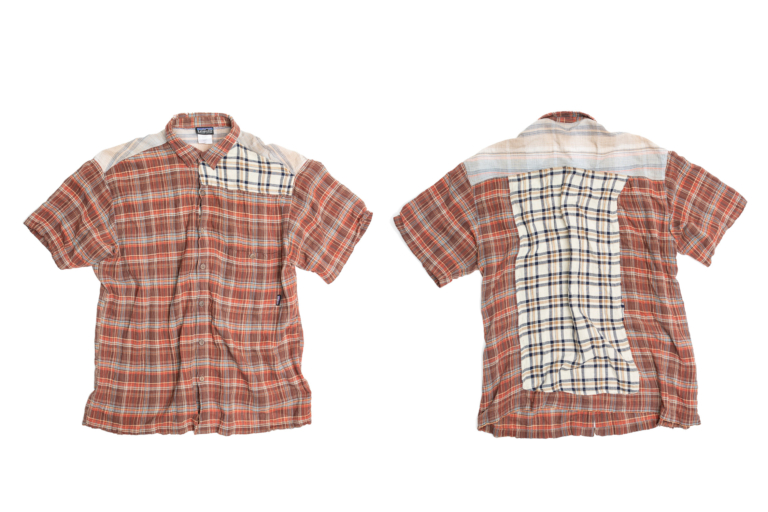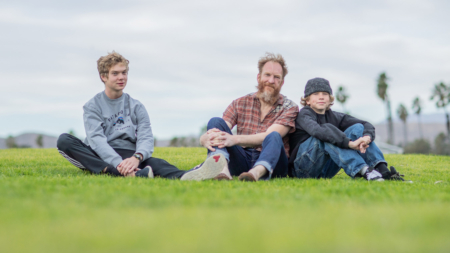Stitch in Time
As a repaired shirt becomes more of an original, it still takes the author back.
It’s difficult for me to keep memories separate from the photographs that record them. I learned this first from visits to my gram’s house well after I’d moved away. A bit bored during a holiday, I’d leaf through her photo albums, the Kodak Instamatic snapshots held in place by those little glued-in corners on thick black “construction paper” pages, the occasion penciled in chalk. In time, what I remembered of Christmases and birthday cookouts, making mud pies and Matchbox cities, beachcombing and stone-stepping through streams all rested on what I saw in those pictures. Now, decades on, there are filters on my phone to simulate the lighting and emulsion of those prints, and it’s my sons’ childhoods that have begun dissolving from living memory into pixels. And right at the boundary of what I actually recall of their earliest years, and what I only recall because it was photographed, is a simple plaid shirt.

“Under the Hibiscus, looking at sky” my wife captioned this photo on Facebook, in 2008. Photo: Mary Ashley
We’d been playing in a sprinkler—that much you can dope out from my soaked shorts. I’d been a bear, or some other beast on all fours, roaming the wet grass, the smaller boy clinging to me, his brother coming to his rescue, everyone soon in a heap. The boys are almost two and a little further from three. They love to be chased like naughty puppies and tickled. Now we are resting, near but in our own worlds. We’re in the yard of the house we wanted for the first boy, the one we never thought we could afford, but we found a way. Then there were two. I’d had the shirt for a few years at that point, but that image is what I remember. Twelve years later, the younger dude says, “Yeah, you wore that the whole time I was growing up.”
Back in January 2020, I brought it to the elves at Worn Wear, the free repair service that Patagonia offers at its original retail location in Ventura, California, among others. “Have I got a challenge for you!” I told Colby, the cheerful “tech” I found behind the desk. He held up the short-sleeved garment and grinned, seeing me clearly through the back panel.
Did I tell him this was the second time I’d challenged Patagonia to save it from the rag bucket? That the SoHo, New York, store had miraculously resurrected it once before? Naturally. To my relief, this seemed to work: He relished the challenge and the intramural throwdown.
Colby also indulged my embarrassing affection for the shirt, listening patiently to my sentimental summary of all we’d been through together. We agreed it might be too far gone this time, a see-what-we-can-do situation. Then Colby and the repair elves had to close up shop like everyone else because of the pandemic, and I wondered if I’d ever see that shirt again.
Crepe-thin, it wore more like Irish linen than an organic cotton knit, and it saw a lot of service during muggy New England summers … for example, as the deputy to the chief engineer of Lobstrania, our world-famous sandcastle in Maine. (Don’t tell me you’ve never heard of it.) And let us not forget the early iterations of Lucky, the star-crossed sand fortresses constructed at the start of each vacation right at the waterline. The shirt often smelled like the last thing I grilled. Good thing it dried in a flash, too: I had it on when a mutiny of all the Lucky cousins led to a dunking in the creek at high tide. Uncle.
As I told Colby, the shirt came along on some great trips—like the journey the boys’ mom and I took so our marriage might survive them. We were missing each other under the same roof, mostly present only for the co-parenting, so we signed up as relay partners in a three-sport adventure race in New Zealand. At first, with the race prep, we saw even less of each other. On my first Class II rapid, I nearly drowned and lost my wedding band—not the symbolism I was after. Even so, it was great to have a shared passion that wasn’t potty training. Once we arrived on New Zealand’s South Island, we had to arrange for race support and get clear on the course. Some of it was unmarked trail. Some of it was whitewater. The Kiwis? Tough competition, mate. Some of them resembled merino rams.

The Speight’s Coast to Coast race attracts all kinds. Right: Plaid is for bungee jumping—everyone knows that. New Zealand, February 2010. Photos: Chris McLennan; courtesy of author, A.J. Hackett Bungy.
July 2020. Corona hair. Corona neck hair, too. A phone call out of the blue, an invitation to come by the Ventura store, aka Great Pacific Iron Works. Your shirt’s ready for curbside pickup. Soon, it’s back in my hands. Later, it’s back on my back. It clashes, but to my eye it’s more stylish than ever.

Better than new. Photo: Tim Davis
I had no idea when I first bought it 16 years ago that I’d eventually work for the company that made it. Now at Patagonia, I’m well versed in the eco-virtues of repair. How it keeps clothes out of landfills, reduces all the waste (especially the use of fresh water) that comes from manufacturing more clothes than most of us will ever need, cuts carbon emissions.
Along with recycling, repair is a critical element of “circularity,” the business world’s buzzword for keeping all the raw materials in use. What if we don’t need to drill, mine, clear-cut, extract so much anymore. What if instead we find ways to keep reusing what we’ve already harvested? Great idea. But if circularity is to replace our disposable consumer culture, it’ll require a shift in mentality. We’ll have to see recycled as better than new, to pay for some things—the same thing—more than once. Will we? If Colby’s repair hadn’t come free, would I have paid for it? Yeah, so maybe.
If I’m honest, though, the reason I would pony up is more selfish than virtuous. Colby and the Worn Wear crew didn’t repair a shirt, they saved me from losing my mind. That shirt keeps my toddler sons at play in my imagination.

